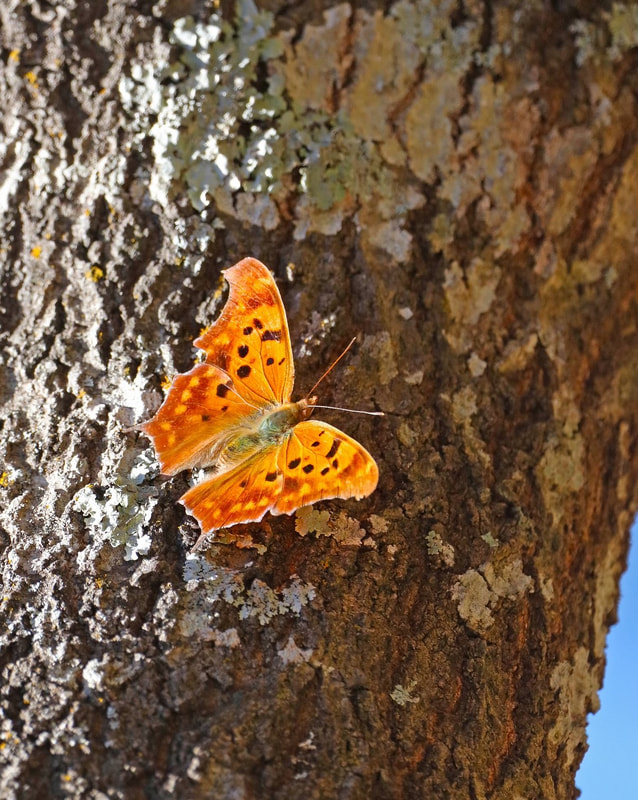
Question mark butterflies (Polygonia interrogationis) can be found throughout the eastern U.S., most often in open woods or woodland edges, parks, or older subdivisions where there are plenty of mature trees (looking at you, Tudek and Park Forest!) And amazingly, these beauties spend the winter in their adult form–at least, one generation does.
The summer generation (“Umbrosa”) emerge and frolic from May–September, laying eggs that develop into the winter generation (Fabricii”). These adults, which appear in late August, are generally considered short-distance migrants in Pennsylvania. Most will travel to southern counties to pass the cold months in various shelters, perhaps tucked away underneath loose tree bark or under the eaves of an outbuilding. (However, adults have occasionally been spotted in wintertime at the SBG!)
Unlike some species, the larvae of this beautiful butterfly aren’t too choosy: They can feed on a variety of host plants, including elm (Ulmus), hackberry (Celtis) and nettles (Urtica). The females don’t lay their eggs directly on the host plants, but on the leaves of others nearby, so the caterpillars must work a little harder to find their first meal!
The angular, hooked wings of the adult butterfly are bright reddish-orange at the top and darker near the bottom, with bold dark spots. The light-brown underwings resemble tree bark and provide excellent camouflage, and the common name derives from the pearly white ‘?’ shape located there.
Appearances can be deceiving, though–you’d never guess that this sweetly lovely butterfly isn’t that interested in nectar. Instead, the question mark has a more complex palate, seeking out rotting fruit, tree sap, carrion–or even poop! . Only when these are unavailable do question marks visit flowers for nectar. It might seem bizarre, but when we consider the food sources available to overwintering lepidoptera, Nature’s way makes perfect sense.
Like mourning cloaks, question marks can be seen flying very early in the spring, and during warm spells in January or February. Male question mark butterflies perch on leaves or tree trunks to watch for passing females, and may fly out to investigate insects, birds, or other critters (including us!) passing by. So keep your eyes open, and remember–it’s not always about the nectar!
For excellent photos of. larvae, chrysalides, and both adult generations, visit: https://entnemdept.ufl.edu/.../bfly/bfly2/question_mark.htm

 RSS Feed
RSS Feed